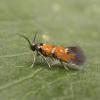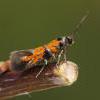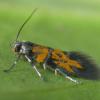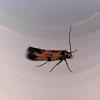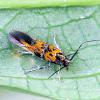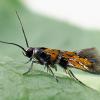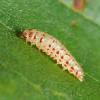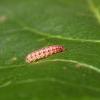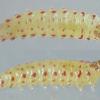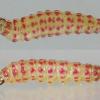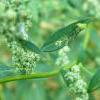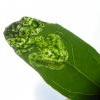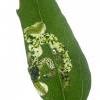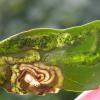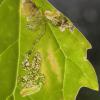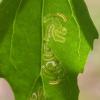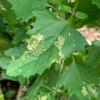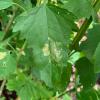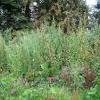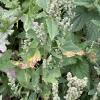35.035 Chrysoesthia drurella (Fabricius, 1775)
Status and Distribution
Local to locally common over much of central and southern England, very local in south-west and northern England, parts of Wales and the Channel Islands.
There are dots for VC77 and VC82 in central lowland Scotland on the National Vice County maps without specific details and well north of the present known range for this species; otherwise it is apparently absent from Scotland, Isle of Man, Northern Ireland and Ireland.
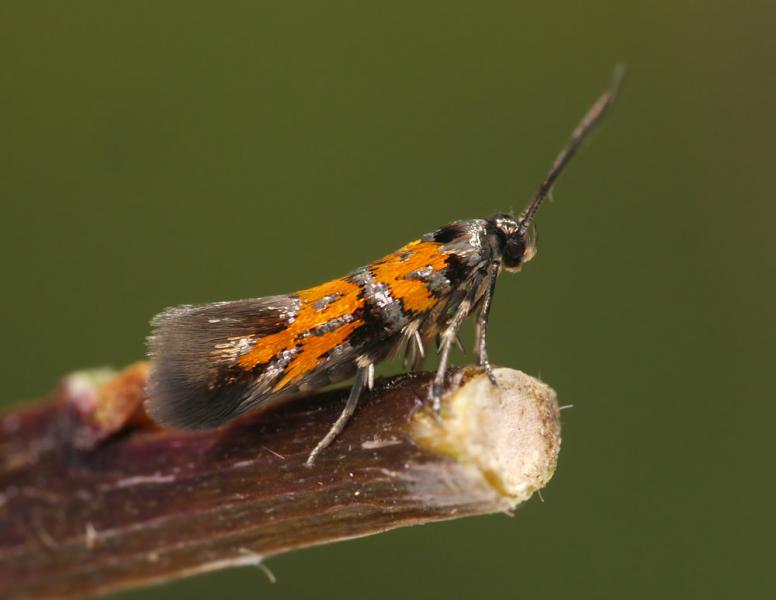
Provisional map
Foodplant and Larval Feeding Signs
Atriplex spp. (orache) and Chenopodium spp. (goosefoot (part)) including Atriplex patula (common orache), Atriplex hortensis (garden orache), Chenopodium album (fat-hen) and C. giganteum (tree spinach, in Glos. 2014 R. Homan); Lipandra polysperma (many-seeded goosefoot) and Oxybasis rubra (red goosefoot). The foodplant map shows Atriplex patula as a representative species from this group of plants. In Europe it has also been reported from Atriplex sagittata, Blitum bonus-henricus, Chenopodiastrum hybridum, C. murale, Amaranthus sp. and Polygonum aviculare.
The larva makes a distinctive mine forming a gut-like pattern by turning back on itself. This can completely occupy smaller leaves and the larva will readily move onto a fresh leaf. The frass, which is retained in the mine, is initially greenish in colour later becoming black.
The parasitic wasp Agathis fuscipennis (Zetterstedt) was bred from a larva of C. drurella found in VC27 in 2003 (M. Hall, det. M. Shaw).
Finding the Moth
Larva: C. sexguttella and Dipteran species also mine some of the same foodplants but the distinctive mine of C. drurella, with its gut-like pattern, readily distinguish this species. Once feeding has been completed in a leaf or when more than one larva are present in a leaf (not an unusual occurence), the larva will happily move onto another leaf to continue feeding.
Adult: The moth has been found resting on the foliage and flowers of skullcap, cherry, tansy, rudbeckia and common fleabane but it is most regularly encountered by sweeping the foodplants and comes to light.
Similar Species
The silver metallic scales and orange forewing markings against a black background give the moth a superficial similarity to Chrysoclista lathamella, C. linneella, Mompha locupletella, Schiffermuelleria grandis and S. schaefferella. Chrysoesthia drurella usually has a complete, outwardly oblique silver fascia at one-third (sometimes slightly broken), not present in the first three species. The Schiffermuelleria pair are much larger and have the antennae white in the final third, all black in C. drurella. The relatively broad shape of the hindwing which comes to a pointed, finger-like projection in C. drurella (a standard feature of the Gelechiidae) will exclude all of these species.
Double-brooded from late April to early July and from late July to September. During 2012 exceptionally large numbers were found at one site in mid- to late July but these seem to have been associated with moths breeding in a greenhouse (polytunnel) environment. A specimen dated 5th November 1985 (VC17) has been found in a private collection but it is not known if it was reared from a larva hence producing this unusual date.

